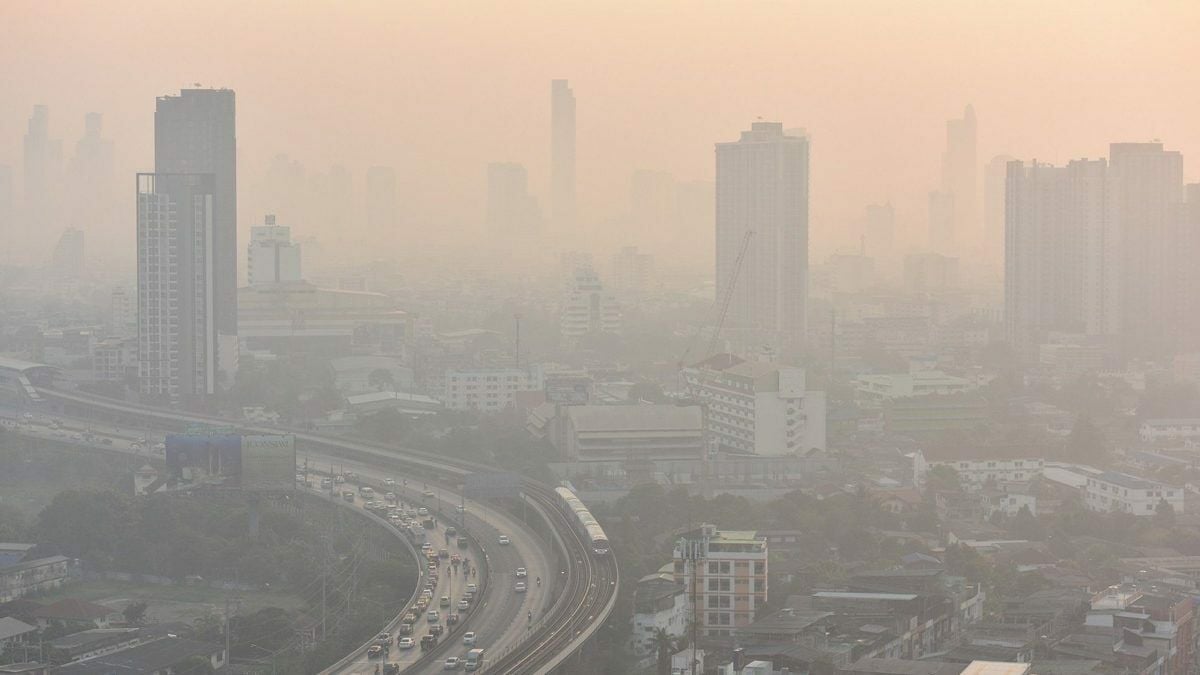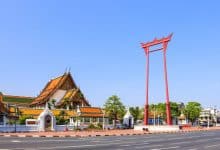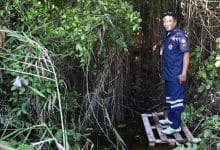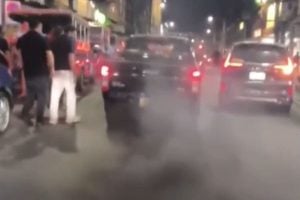Bangkok faces alarming PM2.5 pollution spike, 32 districts affected

Bangkok is suffocating under a cloud of smog as PM2.5 pollution levels surge, forcing 32 districts to breach safety thresholds.
Satellite data from the Geo-Informatics and Space Technology Development Agency (GISTDA) casts a spotlight on Nong Khaem, clocking the most dangerous levels at a staggering 61.3 microgrammes per cubic metre. Such pollution spells disaster for our lungs, with the respiratory system at the sharpest end of this toxic spear.
The boffins at GISTDA are burning the midnight oil, using cutting-edge satellite tech and a dedicated air quality app to monitor this escalating crisis. Their app is a lifeline for Bangkok’s residents, offering real-time air quality alerts so people know when it’s safe to breathe easy. Yet, while parts of the city hit pollution highs, some districts manage to cling to moderate air quality.
This isn’t just the capital city’s headache, PM2.5 pollution is plaguing 21 provinces across the nation. Samut Sakhon takes the crown for the worst offender at 51.7 microgrammes per cubic metre while other provinces range from tolerable to downright worrying.
Health experts are urging everyone to don masks outdoors and shield their lungs from harm, especially those with health woes or those in vulnerable groups like kids and the elderly.
GISTDA’s satellite data is a game-changer, arming officials with the knowledge to devise smarter plans and rapid advisories to soften the impact of poor air quality, said a spokesperson.
“Air quality in several of Bangkok’s districts and provinces is at worrying levels. We’re telling everyone to take precautions, particularly those sensitive to air quality swings.”
Pollution culprits
The culprits behind this pollution mess are manifold: car exhausts, industrial emissions, and the seasonal burning of crops clutter the air, creating a perfect storm under certain weather conditions.
The fight against air pollution comes with both swift interventions and long-term tactics. Boosting public health warnings, enforcing stricter emission rules, and championing cleaner technology industries are all on the front line of this battle.
In a bid to clear the air, the Thai government is joining forces with environmental watchdogs and international organisations to seek sustainable, breath-of-fresh-air solutions. Public campaigns are underway to educate citizens on the dire effects of pollution and rally community support against the growing menace.
With urban sprawl and industrial operations on the rise, maintaining good air quality demands a team effort—government, businesses, and everyday folks must unite to tackle the environmental beast, KhaoSod reported.
While Bangkok and various provinces are under attack from poor air quality, the ongoing strides in monitoring and public initiatives aim to quell the health hazards of PM2.5 pollution.
What Other Media Are Saying
- Bangkok Post highlights alarming PM2.5 pollution levels exceeding safety limits across all Bangkok districts, prompting concerns over health impacts and government incentives aimed at reducing crop burning as a contributing factor. (read more)
- EFE reports that Thailand faces severe air pollution affecting over half the country, primarily due to agricultural fires, prompting health warnings for residents to wear masks outdoors. (read more)
Frequently Asked Questions
Here are some common questions asked about this news.
Why is satellite technology crucial in managing Bangkok’s air pollution?
It provides real-time data for prompt responses, aiding in public advisories and strategic planning to address health impacts.
How might stricter emission controls impact Thailand’s industrial sector?
They could drive industries toward adopting cleaner technologies, potentially reducing pollution but also requiring significant adjustments.
What if Bangkok fails to improve its air quality standards?
Persistent pollution could lead to worsening public health issues and economic setbacks due to decreased quality of life.
How do educational campaigns contribute to reducing air pollution in Thailand?
They raise awareness and encourage community involvement, fostering collective actions to mitigate pollution sources.
What role does community involvement play in combating PM2.5 pollution?
Community actions can support government measures, promote sustainable practices, and enhance the effectiveness of pollution reduction efforts.
Latest Thailand News
Follow The Thaiger on Google News:


























